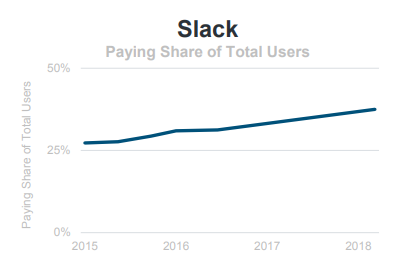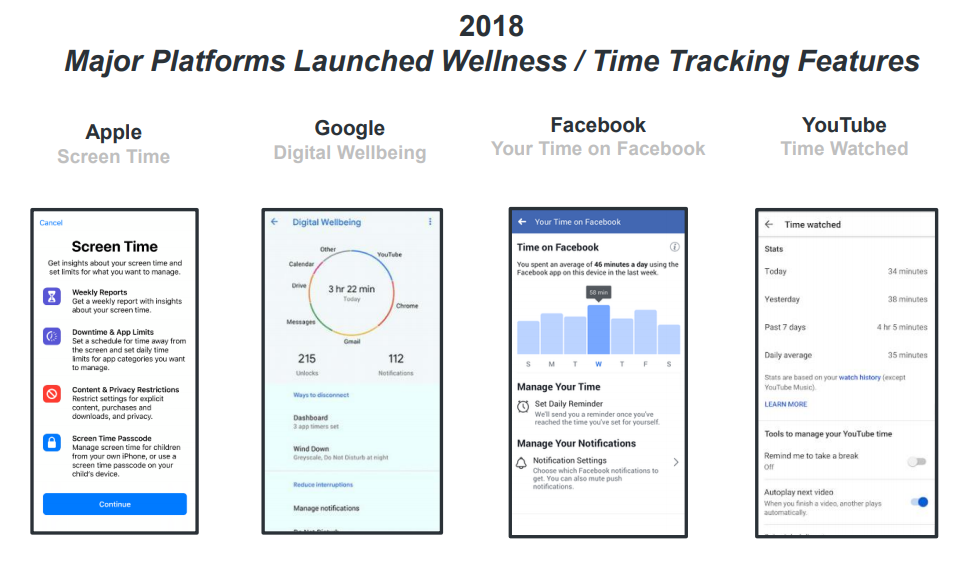Okay, internet users, it’s June. So it’s time for us all to put our ears to the ground and hear what the Mary Meeker report has to say about key trends that are currently shaping the digital world.
A lot of the findings are expected (there are more internet users than ever, and we’re becoming more obsessed with social media and ecommerce). But the report also found some surprising trends as well: the Internet is changing our workforce, influencing a growing gig economy, and more people around the globe are ditching their bank cards and using their mobile devices to pay instead.
At FastSpring, there were 9 key trends in the report that caught our eye. Let’s take a deeper look at them.
1. We’re Personalizing Customer Experiences More Than Ever Before
Companies are farming more data than ever before to try and find out what their customers are looking for in a product or service.
Surprisingly, the report found consumers are happy to hand over their data if it meant a more personalized experience with a brand.

More and more companies are starting to realize the trend, too. Whether it’s using data to improve customer experiences, open new markets, or make processes more efficient, data is helping companies unlock their potential.
Looker CEO and President, Frank Bien, said data has become the new application for digital companies.
“Data is now fundamental to how people work & the most successful companies have intelligently integrated it into everyone’s daily workflow,” he said.
So what does company growth look like when you listen to your customers and personalize their experience to what they’ve been asking for? Ask Slack. Founder and CEO Stewart Butterfield said the company had recently launched their Fair Billing Policy, where customers can pay what they think the service is worth.
“It makes our customers say ‘Wow, that’s amazing. ‘They’ll tweet about it, tell their friends about it. They’ll be very happy with us. They’ll be much more likely to renew. They have a positive impression. That positive impression, obviously, makes a huge difference,” he said.

2. Is the allure of the smartphone wearing off? Maybe.
Over half the world’s population has some connection to the Internet. However, the adoption of smartphones may be hitting a plateau, with new smartphone shipments declining for the second year running.
But for those who have a smartphone, nearly a quarter are “almost constantly” online. The main offenders? Millennials between the ages of 18-29.

And the digital giants know that society has started to slip into smartphone zombie mode. The big 4—Apple, Google, Facebook, and Youtube, all released wellness and time tracking features last year to remind users just how much time they were spending watching videos of kittens on their devices.

3. The world is obsessed with Ecommerce
Ahhh, the year where people believed they were going to become multi-millionaires through dropshipping and owning an ecommerce store.
In the US alone, ecommerce now accounts for 15 percent of total retail spending.

And ecommerce sales overall are continuing to climb, reaching nearly $140B in Q1 or 2019 in the US alone.

Dropshipping directory Alibaba also rode the ecommerce wave, increasing its market cap value by 106%. Alibaba Executive Vice Chairman Joe Tsai said millions of small businesses are now using the platform.
“Alibaba has the most comprehensive ecosystem of commerce platforms, logistics & payment to support the digital transformation of the retail sector,” he said.
4. The Internet has Now Penetrated More Than Half of the World’s Population
50% of the world’s population is now using the Internet. That’s about 3.8 billion people, for all those people playing at home.

Some countries are slower on the digital uptake than others. The Asia-Pacific region, along with countries in the Middle-East and Africa, is some of the only remaining areas where internet adoption is still below 50 percent.
That hasn’t stopped worldwide growth amongst tech companies, though. Seven of the top 10 global market leaders are now technology companies:

5. The World’s Advertising Game is Getting Smarter
Let’s talk about advertising.
Google and Facebook are still dominating the advertising market, but other platforms like Pinterest, Twitter, Amazon, and Snapchat saw a higher rate of growth last year.

The reason? Targeting capabilities.
Pinterest pushed its shoppable catalogs, and Twitter’s use of promotable tweets gave Facebook’s holy grail of user targeting a run for its money.

YouTube and Instagram are also hot on Facebook’s tail, having the most significant growth of users over the last year.

One of the reasons may be because of the privacy scandal that rocked Facebook in 2018.
Facebook CEO Mark Zuckerberg said privacy concerns are a “headwind” for the company this year.
“It’s one of the factors that contribute to our expected deceleration of revenue growth throughout the year,” he said.
“You’ve got regulatory – which was GDPR in 2018. The regulatory arc will be longer-term in playing out. Platforms like iOS are making bigger pushes in privacy, and that has the potential impact. We’ve elected to rollout GDPR-type controls globally. Later this year, we’ll be launching Clear History, which will also affect our ability to do third-party targeting.”
Only time will tell if Clear History will help of hinder Facebook’s revenue streams this year. Watch this space.
6. The Gig-Economy is Changing Our Workforce
In the US, 5% of the workforce now works remotely.
Through the power of the Internet, those taking a dive into the gig economy are starting to figure out the patterns of supply and demand and take advantage of them. In the US, millions of people are now moving over into the gig-economy through digital work platforms, and millions more consumers are demanding their services.

With the abundance of online work opportunities out there, more and more people are craving flexible working hours and the ability to travel whenever their heart desires.

But does working remotely benefit companies, too? Integration company Zapier thinks so—the company has a 100% remote team. Co-Founder and CEO Wade Foster said the company uses a stack of collaboration tools, so their 100% remote team can work more efficiently, regardless of where they’re located.
“It’s important for us to have the ability to instantly access a folder, collaborate on a shared document, or chat in real time,” he said.
“With well-connected tools and processes, any remote employee can feel more focused, productive, and in control of their time.”
7. Our Devices are Becoming Our Bank Cards
2018 was the year of online payment options like Apple Pay, Revolut, and Monzo.
Our devices are quickly becoming our bank cards, and more and more people are ditching traditional brick and mortar banks for a purely online alternative.
Co-Founder and CEO of Revolut, Nikolay Storonsky, said the company has helped boost its product through personalization.
“Personalization with the help of data/technology will allow people to have all their [financial] needs covered & what’s more – they will be able to choose all those setting themselves,” he said.
“We’re also heavily investing in data science and engineering to automate, accelerate & increase the quality of these decisions.”

Online banking providers NuBank (Mexico) and Mercado Libre (Brazil) have also seen the same rocketed growth in users switching to their platforms.

MercadoLibre CFO Pedro Arnt said the company has focused on pushing its Wallet-enabled payments services to drive the company’s growth.
“Beyond payments, we are also seeing great adoption of our Asset Management & Credits products,” he said. “These products facilitate access to financial services to millions of Latin Americans who are either unbanked or underbanked.”
The move also helps out people who don’t have any banking histories. The Mary Meeker report found just 27% of adults in Southeast Asia have bank accounts. GrabPay, an online banking platform in Southeast Asia, is bridging the gap for people who don’t have histories with banking institutions.
“Not having a banking history means that a consumer is invisible to traditional financial institutions -no access to capital to grow businesses or pay for houses,” Grab Financial Group Senior Managing Director Reuben Lai said.
“By launching GrabPay on top of Grab’s ride-sharing platform, Grab’s millions of users have access to financial services that they could not access via traditional banks and lenders.”
8. Freemium Products are the Way Forward
Everybody loves free stuff. And companies have now found that offering freemium products is the best way to get new customers into their funnels.
For online streaming services, free trials are now the top way for businesses to attract new customers, beating out user-experience and content libraries.

Spotify has seen a boost in its subscriber rate through its free ad-supported streaming product.
“Our freemium model accounts for ~60% of our gross added premium subscribers,” Spotify CFO Barry McCarthy said.
“The ad-supported service is a subsidy program that offsets the costs of new subscriber acquisition.
“Developing a better user experience produces by far the most viral effect and impact when investing in growth. Engagement drives conversion from free consumption to a paid subscription.”

A breakdown of Spotify users and their use of the platform after joining.
But it’s not just streaming services that are offering freemium products to attract new users. The B2C market is starting to cash in, too.
Canva Co-Founder Melanie Perkins said giving people legitimate value before asking them to pay can be a beneficial strategy for any company wanting widespread adoption.
It worked for Canva:

For enterprise solutions, companies have found it’s better to let their customers try before they buy.
Zoom Founder and CEO Eric Yuan said the company really wanted customers to test out their product.
“It’s really hard to get customers to try Zoom without a freemium product. We make our freemium product work so well, If they like our product, very soon they are going to pay for the subscription,” he said.
“The most important thing is to make sure the existing customer [is] happy rather than chasing after new prospects. Our NPS is in the 67-69 range vs. our peers in the ’20s… We do not want to spend money on [the] marketing side to generate leads.”

A breakdown of just some of the Enterprise Companies who offer a Freemium product to their customers.
9. We’re Obsessed with Sharing Images

Hey, a picture is worth a thousand words, right?
If so, the world is sharing literally trillions of words with each other, through images. The biggest culprit? Instagram, of course.
We’re taking twice as many photos as we were in 2013, and image sharing on Instagram since 2010 has spiked.
Instagram Co-Founder Kevin Systrom said the spike is because people have always been visual, and our brains are wired for images.
“Writing was a hack, a detour. Pictorial languages are how we all started to communicate – we are coming full circle. We are reverting to what is most natural. Instagram has always been a communication platform, not an image sharing too,” he said.
“Instagram challenges the notion that beauty comes in a traditional, artsy form… it’s not about beauty, it’s about the story you tell.”
Is Your Company Staying on Trend?
We all work in the digital world, so we all know how important it is to stay on top of trends before they get on top of us.
For businesses, the big takeaway of this year’s Mary Meeker report is the way consumers are interacting with brands and the Internet. Consumers becoming more willing to hand over their data for a personalized experience, and they’re more willing to test out a product or service if it’s being offered freemium.
Society is becoming more obsessed with technology, too. We’re spending more time on our mobile devices, we’re taking more pictures (and sharing them), and we’re even using our devices as a bank.
Take note of the trends. If your company wants to keep up with consumers, you need to listen to what they’re asking for—and make it happen.









